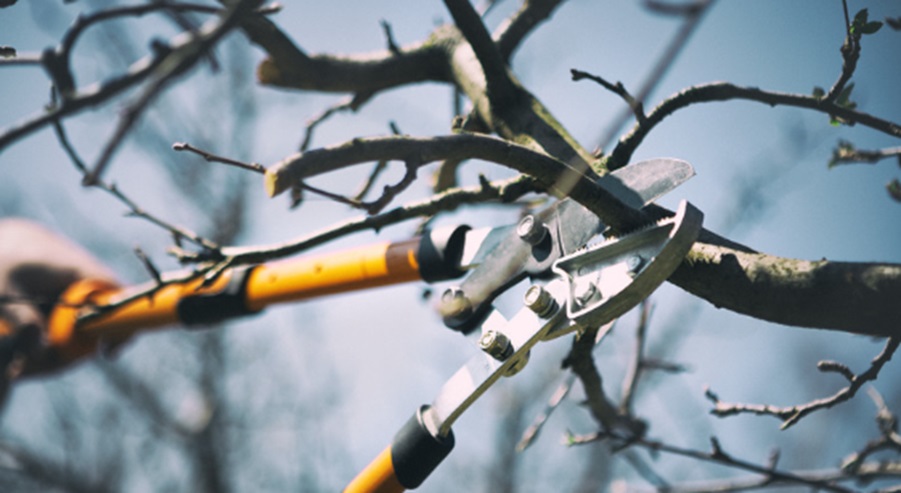
Essential Spring Care: Top 10 Pruning Techniques for Healthy Growth
Spring is the perfect time to give your trees the care they need to thrive. Pruning plays a vital role in maintaining tree health, promoting new growth, and ensuring their structural integrity. While some tasks may seem straightforward, improper pruning methods can lead to damage. If you’re unsure where to start, seeking professional help from a trusted tree service in Canton, GA, ensures your trees get expert attention.
Below, we will outline ten effective pruning techniques to promote healthy, robust trees.
1. Start With a Thorough Tree Inspection
Before you pick up any tools, take time to inspect the tree as a whole. Look for signs of damage, such as broken branches, deadwood, or disease. Understanding the condition of your tree helps you prioritize which areas need immediate attention.
A professional inspection not only saves you time but can also uncover hidden issues that are easy to miss without expert knowledge.
2. Focus on Dead or Damaged Branches First
Removing dead or damaged branches is essential to prevent decay and pest infestations. These branches can sap energy away from the tree, making it harder for new growth to flourish.
While tackling this, it’s important to ensure cuts are clean and precise to avoid further harm to the tree’s structure. An expert eye can ensure each cut supports continued health and growth.
3. Prune for Shape and Structure
Shaping your tree enhances its appearance while ensuring balanced growth. Structural pruning helps remove awkward or crossing branches that may weaken over time.
Over-pruning, however, can harm the tree by removing too much foliage. For balanced results, consider working with professionals who understand the tree’s growth patterns.
4. Maintain Proper Crown Thinning
Crown thinning reduces excess branches, improving air circulation and light penetration through the canopy. This technique is particularly useful for trees with dense foliage, making them more resistant to storm damage.
Improper thinning can leave gaps or weaken limbs, leading to breakage. If you’re looking for expert help, make sure you avoid common mistakes when hiring a tree service for your property by carefully selecting experienced professionals.
5. Be Mindful of Seasonal Timing
Pruning during the wrong season can stress a tree and make it vulnerable to pests and disease. Spring is generally a good time for pruning before trees start their active growth phase. However, some species may benefit from pruning during different times of the year.
6. Remove Branches Growing Too Close to Structures
Branches too close to buildings, fences, or power lines pose safety risks. These should be removed to avoid potential property damage or hazardous situations during storms.
This method demands not only care but also expert judgment to protect both the tree and its surroundings.
7. Focus on Proper Cuts
The placement and precision of your cuts are crucial. Poor-cutting techniques, such as leaving stubs or cutting too close to the trunk, can leave your tree susceptible to decay.
Professionals ensure every cut facilitates healing, minimizing the risk of damage or pests.
8. Address Overcrowded Areas
Branches that are too close together restrict airflow and light. This overcrowding can lead to fungal diseases and reduced growth. By removing competing limbs, you improve the conditions for healthier growth.
For post-pruning care, it’s worth considering expert help to restore your trees and surrounding landscape. A well-executed tree removal aftercare plan is essential to restore the health and appearance of your landscape.
9. Avoid Topping
Tree topping, or the removal of the uppermost branches, can shock a tree, leaving it weak and vulnerable. This technique creates more problems than it solves, leading to growth issues and the potential for decay. Leave strategies like crown reduction to experienced hands instead of resorting to topping.
10. Schedule Regular Maintenance
Regular inspections and touch-up pruning ensure your trees continue to flourish. Maintenance also prevents problems from escalating, saving both time and expense in the long run.
Tree care is an ongoing commitment, and professional arborists make this process efficient, giving you confidence that your trees will thrive for years to come.
Conclusion
Great tree care starts with understanding your tree’s needs and using proper techniques to support healthy growth. Hiring professionals takes the guesswork out of pruning, helping your trees reach their full potential without risk.
Whether it’s removing dead branches, shaping the canopy, or eliminating safety hazards, expert tree care ensures that everything is done right. With the right approach, your trees will reward you with beauty and vitality season after season. Don’t hesitate to seek out professional support for a thriving spring landscape!
